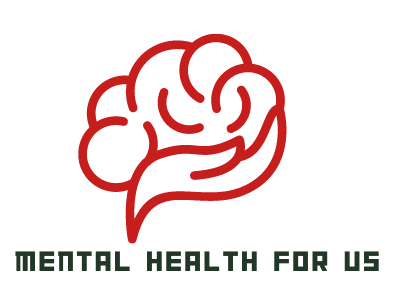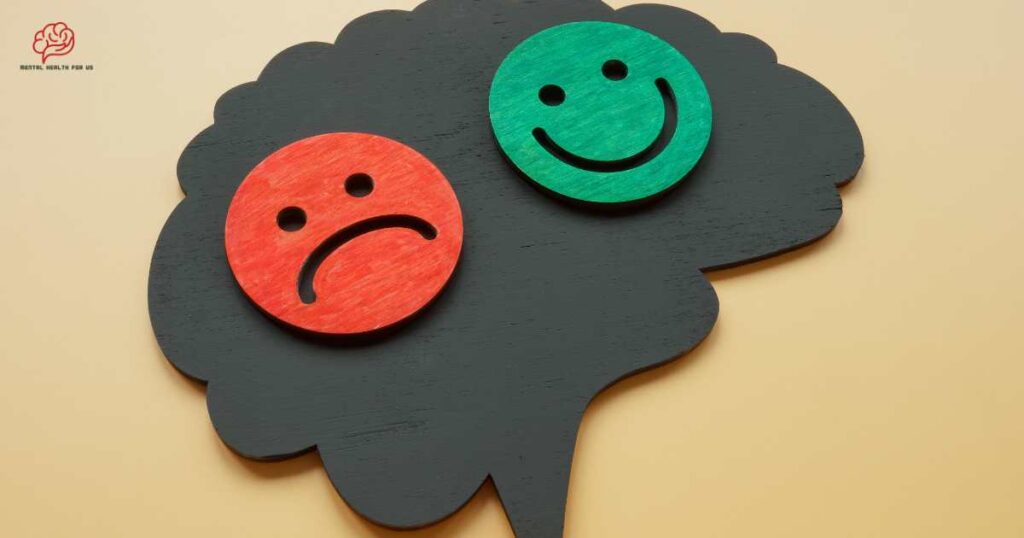Introduction
Psychodynamic therapy is a popular psychotherapy that addresses the psychological and emotional causes of bipolar disorder. Bipolar disorder is a complex mental illness that causes extreme mood swings, including mania and depression. Psychodynamic therapy can help manage bipolar disorder by exploring the patient’s past, unconscious conflicts, and relationships. This therapy helps bipolar patients manage their condition and live a more stable and fulfilling life by increasing self-awareness, and emotional regulation, and addressing the root causes of their symptoms. The following section will review how psychodynamic therapy works for bipolar disorder.
Explanation of Psychodynamic Therapy
Sigmund Freud’s psychoanalysis underpins psychodynamic therapy. Identifying developmental and social-emotional issues that cause bipolar disorder is its treatment goal.
The therapist and client explore unconscious feelings, thoughts, and patterns of thinking that may be affecting behavior and emotions in psychodynamic therapy. This therapy holds that early childhood experiences shape psychological functioning.
Bipolar disorder patients undergo psychodynamic therapy to address emotional and social factors that may cause mood swings. It seeks unresolved conflicts, trauma, and relationship issues that can cause manic or depressive episodes.
Psychodynamic therapy seeks to understand bipolar disorder symptoms’ causes. Addressing the disorder’s causes and promoting healthier relationships and coping strategies can reduce symptoms and improve quality of life.
Psychodynamic therapy addresses developmental and social-emotional factors to treat bipolar disorder holistically. It can help people identify the causes of their mood swings and find better ways to manage them.
Theoretical Framework for Understanding Bipolar Disorder
Bipolar disorder is a complex mental illness that causes mania and depression. To understand and treat bipolar disorder, a solid theoretical framework is needed to understand its causes and contributing factors. A framework is psychodynamic therapy. This therapy examines unconscious thoughts, feelings, and patterns that may cause mood swings. Psychodynamic therapy seeks to identify bipolar disorder symptoms by exploring past experiences and unresolved conflicts. Addressing deeper psychological factors can relieve symptoms and improve quality of life. Psychodynamic therapy helps mental health professionals understand bipolar disorder and provide effective, individualized treatment.
Freudian Theory of Mind
Freudian Theory of Mind states that the id, ego, and superego influence human behavior and thought. The id seeks immediate pleasure from basic desires and impulses. However, the ego mediates between the id and external reality using the reality principle. Finally, the moral superego internalizes social norms.
These factors shape unconscious conflicts that cause bipolar disorder symptoms. Bipolar disorder causes extreme mood swings from manic to depressive. These mood swings may be caused by unconscious id-superego conflicts. Manic or depressive symptoms result from the id’s relentless pursuit of pleasure clashing with the superego’s morality and societal expectations.
Psychodynamic therapy, influenced by the Freudian Theory of Mind, seeks to reveal these unconscious conflicts. Psychodynamic therapy analyzes and interprets thoughts, emotions, and behaviors to reveal unconscious feelings and unresolved conflicts. Exploring and resolving these conflicts can help bipolar disorder patients understand their thinking, gain self-awareness, and improve their coping skills.
In summary, the Freudian Theory of Mind explains how unconscious conflicts cause bipolar disorder symptoms. By revealing and resolving these conflicts, psychodynamic therapy for bipolar disorder is effective.
Ego Defense Mechanisms
Psychodynamic therapy for bipolar disorder involves ego-defense mechanisms. The ego uses unconscious defense mechanisms to protect the individual from anxiety, distress, and uncomfortable emotions. Therapists can help patients identify and resolve their conflicts by understanding these defense mechanisms.
Denial is a bipolar disorder defense. Manic episodes may cause people to deny the negative effects of their impulsive actions on their relationships and finances. Denial may also reduce the severity of symptoms during depression.
Projecting negative thoughts, feelings, and impulses onto others is another defense mechanism. An angry manic episode sufferer may accuse a loved one of being hostile or critical.
Bipolar disorder patients rationalize as a defense. This involves rationalizing their actions or feelings. For instance, a depressed person may rationalize their lack of motivation by believing they have no control over their situation.
These defense mechanisms help avoid difficult bipolar disorder topics and emotions. Displacement or distortion of reality can help people maintain control, avoid shame or guilt, and boost self-esteem. These defense mechanisms prevent people from fully examining and addressing the underlying conflicts and emotions causing mood episodes, which can hinder therapy.
The therapist helps clients recognize and challenge these defense mechanisms to better understand their conflicts and emotions in psychodynamic therapy. This process helps people improve their emotional regulation, coping skills, and well-being.
Unconscious Conflict and Its Role in Manifesting Symptoms
Unconscious conflict contributes to bipolar disorder symptoms. This idea comes from psychodynamics, which holds that unconscious conflicts and emotions can affect a person’s thoughts, feelings, and actions.
Unconscious conflicts can cause mood swings in bipolar disorder patients. These conflicts often involve conflicting desires, shame, guilt, and unresolved traumas. In bipolar disorder, unconscious conflicts related to abandonment can cause intense mania as they try to fill that emotional void. During depressive episodes, unconscious conflicts related to unworthiness may lead to low self-esteem and pessimism.
Unconscious conflicts can worsen bipolar disorder mood swings. Conflicting emotions and desires cause inner turmoil and mania/depression. Without addressing unconscious conflicts, extreme mood states and symptoms may persist.
Psychodynamic therapy makes unconscious conflicts conscious, allowing people to explore and integrate their emotions and desires. Psychodynamic therapy helps people understand their unconscious conflicts and develop healthier coping mechanisms in a safe, non-judgmental environment. This method can reduce mood swing intensity and frequency, improving bipolar disorder symptom management and quality of life.
Techniques Used in Psychodynamic Treatment for Bipolar Disorder
Psychodynamic therapy for bipolar disorder explores unconscious thoughts, feelings, and behaviors and is effective. The therapist works with the patient to identify and understand thought patterns that may cause mood swings. The individual can develop coping skills tailored to their needs by recognizing these patterns. These skills may include self-care, emotional expression, communication, problem-solving, and routine maintenance. Regular practice of these techniques helps people regulate their emotions, build resilience, and improve their quality of life.
Interpretive Techniques
Psychodynamic treatment for bipolar disorder relies on interpretive techniques to reveal unconscious conflicts and symptom causes. These techniques help therapists access the patient’s unconscious mind, where conflicts and unresolved issues may be.
Dream analysis is a common psychodynamic therapy interpretive technique. Therapists can better understand patients’ unconscious conflicts and desires by studying dream symbolism and latent content. Dreams help therapists link past and present symptoms.
Free association, which encourages patients to express themselves without judgment, is another important technique. Therapy can reveal underlying emotions, thinking patterns, and unconscious beliefs that may cause bipolar disorder symptoms.
Psychodynamic therapists use these interpretive methods to help patients understand their symptoms. As patients identify and resolve unconscious conflicts, this deeper understanding can heal and transform them. Psychodynamic therapy addresses the causes of bipolar disorder to improve symptom relief and quality of life.
Free Association and Dream Analysis
Free association is essential to psychodynamic therapy for bipolar disorder. In this therapy, patients are encouraged to freely express their thoughts and feelings without judgment. Patients can examine their unconscious thoughts, desires, and fears, which may be causing bipolar symptoms.
Free association can reveal previously inaccessible psyche layers. This can reveal the causes of their bipolar symptoms. Patients can resolve conflicts and relieve symptoms by understanding their unconscious thoughts and emotions.
Dream analysis is another important psychodynamic bipolar disorder treatment. Therapists can better understand patients’ inner conflicts and desires by analyzing dream symbolism and latent content. Dreams can reveal past experiences and present symptoms.
Psychodynamic therapy uses free association and dream analysis to help bipolar disorder patients understand their unconscious thoughts and emotions. This holistic approach treats the condition’s root causes and helps patients improve their coping skills and quality of life.
Transference Analysis
Transference analysis is essential to psychodynamic therapy for bipolar disorder. It involves exploring unconscious conflicts and emotions transferred onto the therapist during therapy.
Patients may develop intense feelings toward their therapist that resemble those of a parent or partner during therapy. Positive emotions like love and admiration can turn negative like anger or resentment. Transference occurs when these feelings affect the therapist.
Transference analysis in psychodynamic therapy uncovers unconscious conflicts by examining transferred emotion patterns and dynamics. It helps the therapist and patient resolve unresolved issues and understand the patient’s bipolar symptoms.
Transference must be addressed for insight and therapeutic progress. The therapist can help the patient understand their emotional reactions and how they may affect their relationships by acknowledging and exploring these transferred emotions. This understanding helps the patient develop healthier relationships and resolve unresolved conflicts, improving symptom management and quality of life.
Finally, transference analysis is important in psychodynamic bipolar disorder treatment. It helps patients identify and resolve unconscious conflicts in the therapeutic relationship, improving self-awareness and relationship patterns. Psychodynamic therapy can help treat bipolar disorder by addressing transference.
Benefits of Psychodynamic Therapy for Bipolar Disorder
Bipolar disorder patients benefit from psychodynamic therapy. First, it can improve mood by helping patients understand their condition. Bipolar patients can understand their symptoms by exploring unconscious thoughts and feelings. Increased understanding helps them link emotional experiences to mood swings.
Psychodynamic therapy also improves coping skills. People can improve their stress management and emotional regulation by examining past experiences and thinking and behavior patterns. This helps them manage bipolar disorder.
Symptom severity can be reduced by psychodynamic therapy. The therapy helps patients resolve their symptoms by addressing unresolved conflicts and emotions. This process heals emotions and reduces manic and depressive episodes.
Finally, psychodynamic therapy improves functioning. Improved insight and emotional regulation help people navigate relationships and make healthier decisions. Stability, interpersonal relationships, and life functioning can improve.
In summary, psychodynamic therapy improves mood, understanding, coping skills, symptom severity, and functioning for bipolar disorder patients.
Conclusion
In conclusion, Finally, psychodynamic therapy for bipolar disorder has many benefits. People can better manage stress and emotions by exploring past experiences, identifying thought and behavior patterns, and developing effective coping strategies. Addressing unresolved conflicts and emotional issues can reduce manic and depressive episodes and their severity. Psychodynamic therapy also improves insight and emotional regulation, which leads to stability, healthier relationships, and better life functioning.
For best bipolar disorder management, psychosocial treatments like psychodynamic therapy should be combined with medication. Stabilizing mood and managing symptoms requires medication. Medication combined with psychosocial treatments like psychodynamic therapy can improve functioning and quality of life. Combining biological and psychological approaches to the disorder creates a comprehensive and effective treatment plan. Thus, bipolar disorder patients should collaborate with their healthcare team to create a customized treatment plan that includes medication and psychosocial therapies to improve disorder management and functioning.
FAQs
What are the new treatments for bipolar disorder in 2023?
Some emerging bipolar disorder treatments include:
- Digital Therapeutics: Apps and websites that provide CBT and other therapies to help people manage their symptoms.
- TMS: A non-invasive method that uses magnetic fields to stimulate brain areas has shown promise in treating bipolar disorder depression.
- Ketamine and Esketamine: These intravenous or nasal spray antidepressants relieve symptoms quickly, especially in treatment-resistant bipolar depression.
- Omega-3 Fatty Acids: Omega-3 supplements may help bipolar disorder patients manage mood symptoms, but more research is needed.
Can psychoanalysis treat BPD?
Psychoanalysis is not normally the first BPD treatment. BPD treatment often involves evidence-based therapies like DBT and CBT. Some BPD patients may benefit from psychoanalytic approaches in addition to evidence-based therapies to explore deeper emotional and interpersonal issues.
Is a psychologist or psychiatrist better for BPD?
A psychiatrist-psychologist team is often the best way to treat Borderline Personality Disorder. Psychologists can provide Dialectical behavior therapy (DBT) or cognitive behavioral therapy (CBT), which are essential for BPD management. If needed, psychiatrists can prescribe and manage medication for specific symptoms or co-occurring conditions. Collaboration between professionals can provide a comprehensive BPD treatment plan.







